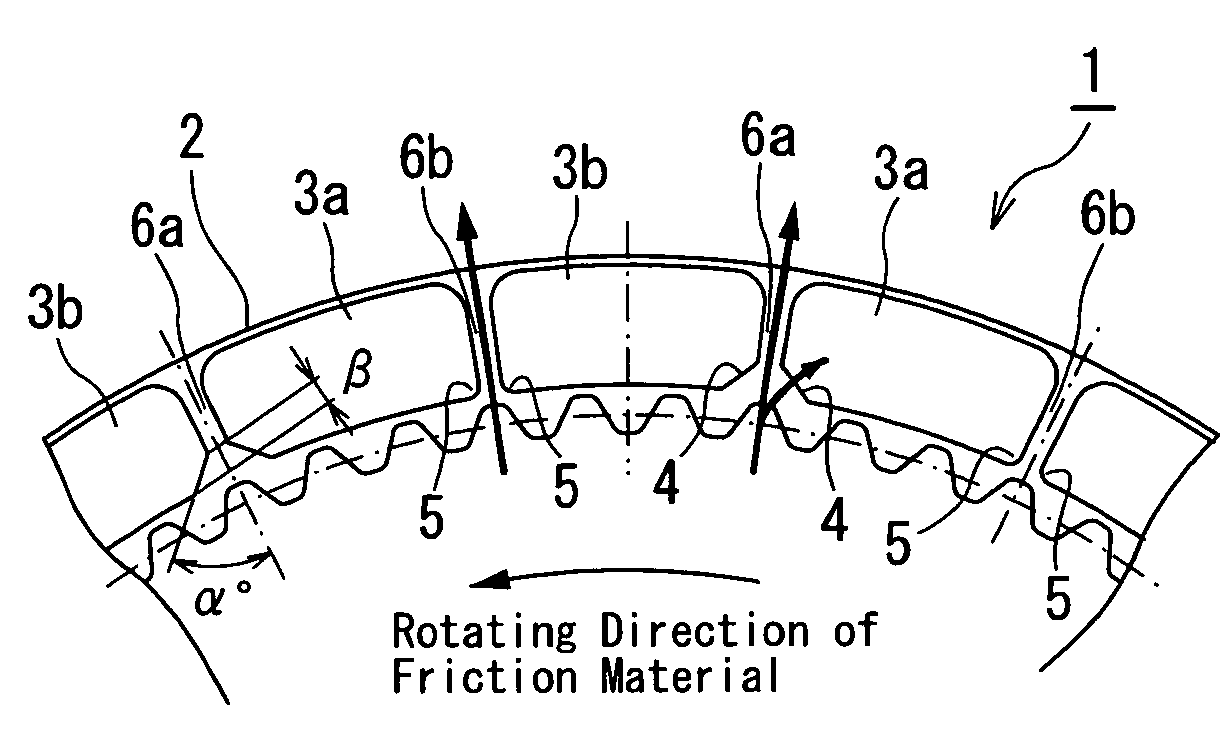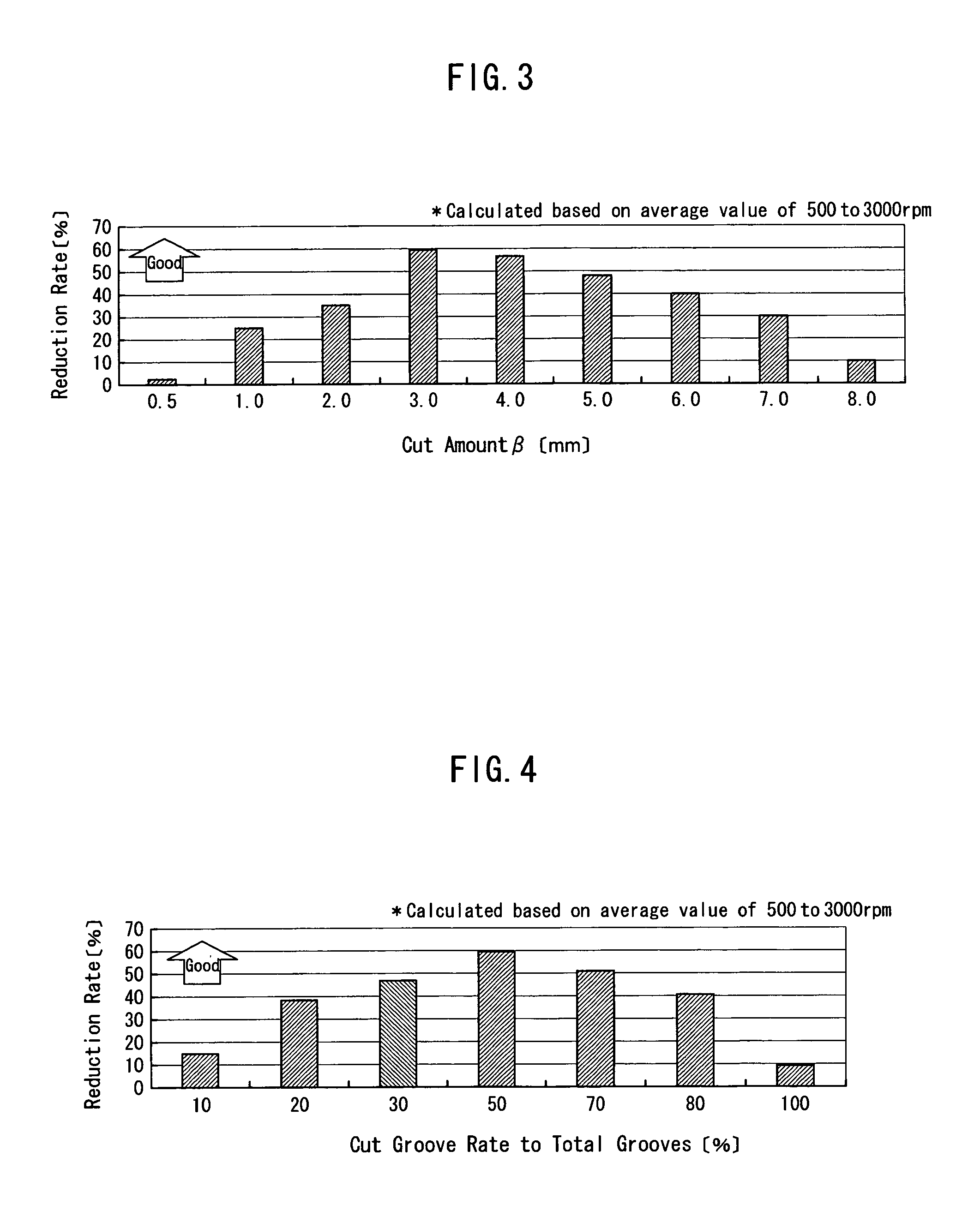Wet friction material
a friction material and wet technology, applied in the direction of friction lining, mechanical actuated clutches, braking discs, etc., can solve the problems of hydraulic oil drag torque generation, limited oil passage area of segment-type friction material, and difficult to discharge the remaining lubricating oil between the segment-type friction material and the separator plate, etc., to reduce the drag torque sufficiently, reduce the cost, and manufacture in a short period of time
- Summary
- Abstract
- Description
- Claims
- Application Information
AI Technical Summary
Benefits of technology
Problems solved by technology
Method used
Image
Examples
first embodiment
[0037]A first embodiment of a wet friction material is described referring to FIG. 1 to FIG. 5. FIG. 1 is a plan view showing a part of a wet friction material according to a first embodiment of the invention. FIG. 2 is a graph showing a relation between an inclination angle of an inner peripheral corner of an oil groove and a drag torque reduction rate in the wet friction material according to the first embodiment of the invention. FIG. 3 is a graph showing a relation between a height of an inclined part of the inner peripheral corner of the oil groove and the drag torque reduction rate in the wet friction material according to the first embodiment of the invention. FIG. 4 is a graph showing a relation between a proportion of a number of the oil grooves with the inclined inner peripheral corner to a total number of all the oil grooves and the drag torque reduction rate in the wet friction material according to the first embodiment of the invention. FIG. 5 is a graph showing a relat...
second embodiment
Modified Examples of Second Embodiment
[0057]Next, a segment-type friction material as a wet friction material according to a first modified example of the second embodiment is described referring to FIG. 7. As shown in FIG. 7, the first modified example of the second embodiment of the segment-type friction material 11B has no inner peripheral side of a segment piece cut off contrary to the segment-type friction material 1 or the segment-type friction material 11A described heretofore. Center portions or dents 24 in a radial direction of the segment piece 23a, 23b, which are faced to each other across the oil groove 16a, are respectively cut off in a symmetrical manner.
[0058]In case the segment pieces 23a, 23b have the center portions 24 or the broadened portions not at the inner peripheral side but at the center of the oil groove 16a, similar effects are obtained. That is, in case the segment-type friction material 11B is assembled in an automatic transmission (AT), when the frictio...
PUM
 Login to View More
Login to View More Abstract
Description
Claims
Application Information
 Login to View More
Login to View More - R&D
- Intellectual Property
- Life Sciences
- Materials
- Tech Scout
- Unparalleled Data Quality
- Higher Quality Content
- 60% Fewer Hallucinations
Browse by: Latest US Patents, China's latest patents, Technical Efficacy Thesaurus, Application Domain, Technology Topic, Popular Technical Reports.
© 2025 PatSnap. All rights reserved.Legal|Privacy policy|Modern Slavery Act Transparency Statement|Sitemap|About US| Contact US: help@patsnap.com



